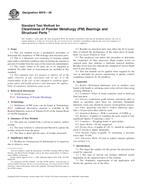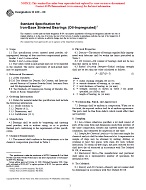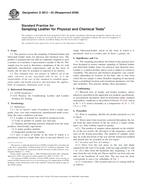1.1 This test method covers the measurement of the steady-state heat transfer properties of pipe insulations. Specimen types include rigid, flexible, and loose fill; homogeneous and nonhomogeneous; isotropic and nonisotropic; circular or non-circular cross section. Measurement of metallic reflective insulation and mass insulations with metal jackets or other elements of high axial conductance is included; however, additional precautions must be taken and specified special procedures must be followed.
1.2 The test apparatus for this purpose is a guarded-end or calibrated-end pipe apparatus. The guarded-end apparatus is a primary (or absolute) method. The guarded-end method is comparable, but not identical to ISO 8497.
1.3 The values stated in either SI units or inch-pound units are to be regarded separately as standard. The values stated in each system may not be exact equivalents; therefore, each system shall be used independently of the other. Combining values from the two systems may result in non-conformance with the standard.
1.4 When appropriate, or as required by specifications or other test methods, the following thermal transfer properties for the specimen can be calculated from the measured data (see 3.2):
1.4.1 The pipe insulation lineal thermal resistance and conductance,
1.4.2 The pipe insulation lineal thermal transference,
1.4.3 The surface areal resistance and heat transfer coefficient,
1.4.4 The thermal resistivity and conductivity,
1.4.5 The areal thermal resistance and conductance, and
1.4.6 The areal thermal transference.
Note 1 – In this test method the preferred resistance, conductance, and transference are the lineal values computed for a unit length of pipe. These must not be confused with the corresponding areal properties computed on a unit area basis which are more applicable to flat slab geometry. If these areal properties are computed, the area used in their computation must be reported.
Product Details
- Published:
- 06/01/2010
- Number of Pages:
- 14
- File Size:
- 1 file , 200 KB


